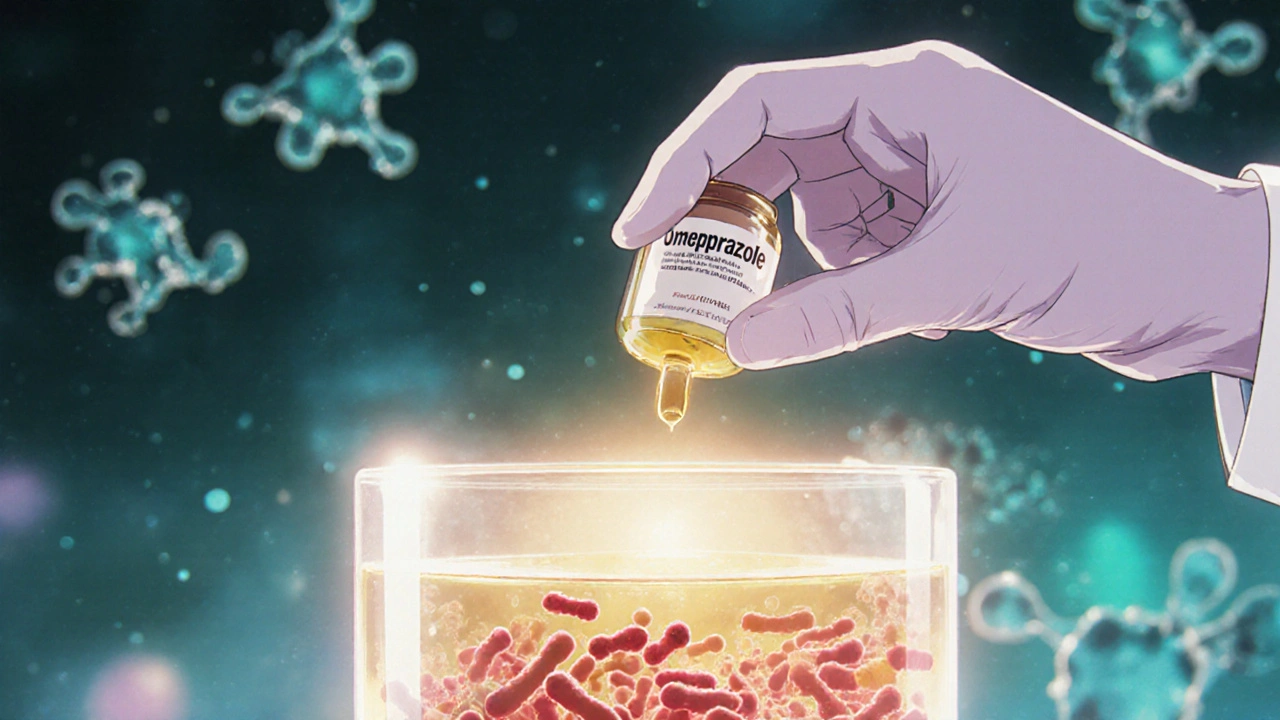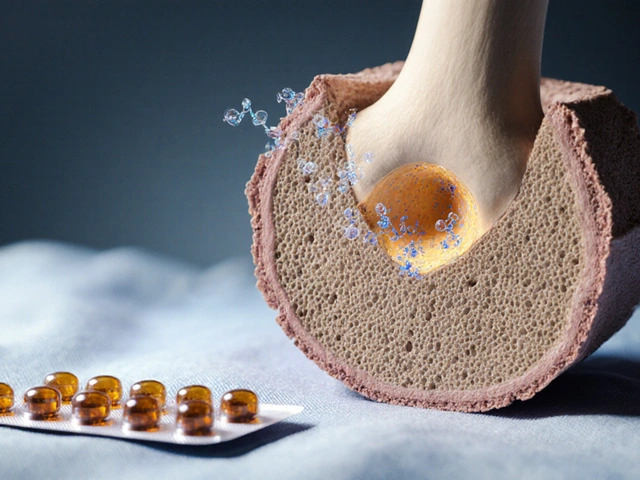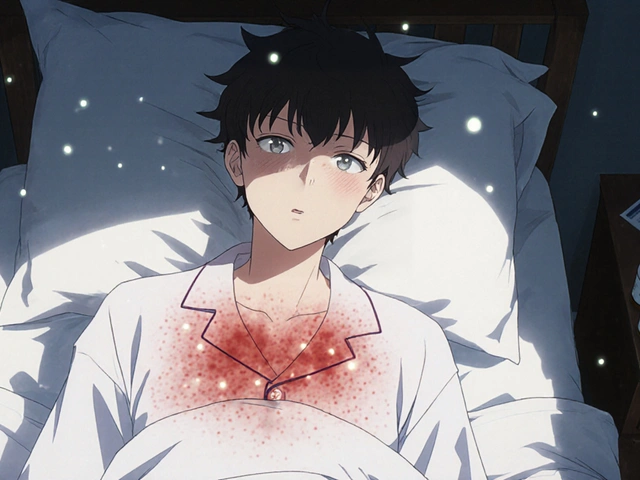Rifampin is one of the most powerful drugs used to treat tuberculosis, but it’s also one of the most dangerous if used without understanding how it interacts with other medications. It doesn’t just kill TB bacteria-it rewires how your body processes almost everything else you take. For patients on TB therapy, this isn’t just a footnote in a prescribing guide. It’s a life-or-death reality.
How Rifampin Works Against TB
Rifampin, also called rifampicin, has been the backbone of TB treatment since the 1960s. Before its introduction, treating tuberculosis meant taking pills for 18 months or longer. With rifampin in the mix-combined with isoniazid, pyrazinamide, and ethambutol-the treatment time dropped to just six months. That’s a 67% reduction in treatment duration, and it’s saved millions of lives worldwide.
It works by shutting down the TB bacteria’s ability to make RNA. Rifampin binds tightly to a part of the bacterial enzyme RNA polymerase, blocking gene expression. At concentrations as low as 0.1-0.5 µg/mL, it stops the bacteria from reproducing. And it doesn’t just hit surface-level bugs-it gets inside macrophages, where TB hides, and kills them there too.
A standard 600 mg dose of rifampin, taken on an empty stomach, reaches peak blood levels of about 7 mcg/mL. But if you take it with food, absorption drops by 30%. That’s why patients are told to take it one hour before breakfast. Skipping this detail can reduce effectiveness and increase the risk of drug resistance.
The Hidden Problem: Rifampin Induces Its Own Enemy
Rifampin doesn’t just target TB-it triggers your body’s own defense system to fight back. It activates something called the pregnane X receptor (PXR), a master switch in your liver and gut. When PXR turns on, it cranks up production of enzymes like CYP3A4, UDP-glucuronosyltransferases, and P-glycoprotein. These are the same systems your body uses to break down and flush out drugs.
Within 24 hours of taking rifampin, your CYP3A4 levels start rising. By day 5-7, they’re doubled or even tripled. That means any drug your body normally breaks down with CYP3A4 gets cleared out much faster. And that’s where things go wrong.
Take oral contraceptives. Rifampin reduces their effectiveness by up to 67%. Women on birth control pills who start rifampin can become pregnant-even if they’ve taken their pill religiously. The same goes for warfarin: levels drop by 42%, raising the risk of dangerous blood clots. HIV drugs like atazanavir and lopinavir? Their concentrations can plunge by 75-90%. That’s not just a side effect-it’s treatment failure.
Even antidepressants, antifungals, and cholesterol-lowering statins can become useless. A patient on simvastatin for high cholesterol might suddenly develop muscle pain or rhabdomyolysis-not because the drug is toxic, but because rifampin cleared it too fast, forcing the doctor to increase the dose, which then builds up dangerously once rifampin is stopped.
The Paradox: Rifampin Makes TB More Resistant
Here’s the cruel twist: rifampin doesn’t just affect your body-it affects the TB bacteria themselves.
Research shows that within hours of exposure to rifampin, some TB bacteria activate efflux pumps. These are molecular pumps that push the drug out before it can kill them. Even worse, rifampin triggers the bacteria to overproduce a protein called RpoB, which helps them survive the drug’s effects. This isn’t genetic mutation-it’s a rapid, reversible survival tactic. The bacteria aren’t becoming resistant yet, but they’re becoming tolerant. And tolerance leads to relapse.
This is why TB treatment can’t be shortened below four months. Clinical trials show that if you stop treatment early, relapse rates jump above 25%. The bacteria that survive the first wave of rifampin aren’t dead-they’re just hiding, waiting for the drug to leave.

What You Can’t Take With Rifampin
Here’s a practical list of medications that become dangerously weak-or dangerously strong-when taken with rifampin:
- Oral contraceptives → Risk of unintended pregnancy
- Warfarin → Risk of clotting or stroke
- HIV protease inhibitors (atazanavir, lopinavir, darunavir) → Treatment failure, drug resistance
- Statins (simvastatin, lovastatin) → Muscle damage, rhabdomyolysis
- Immunosuppressants (cyclosporine, tacrolimus) → Organ rejection in transplant patients
- Antifungals (fluconazole, itraconazole) → Fungal infections return
- Anticoagulants (apixaban, rivaroxaban) → Reduced protection against clots
- Antiepileptics (carbamazepine, phenytoin) → Seizure risk increases
Even over-the-counter supplements like St. John’s wort can interfere. It’s not just about prescriptions-it’s about everything you take.
When to Stop, When to Wait
Rifampin’s effects don’t vanish when you stop taking it. The induced enzymes stick around for up to two weeks. That means if you’re switching from rifampin to something else-say, a new HIV regimen or a blood thinner-you need a buffer.
For drugs with a narrow therapeutic window-like warfarin or cyclosporine-doctors recommend waiting four weeks after stopping rifampin before starting the new medication. For others, two weeks is usually enough. Skipping this waiting period can lead to overdose or toxicity as the body readjusts.
And it’s not just about starting new drugs. If you’re on long-term medications and get diagnosed with TB, your whole regimen needs to be rewritten. A patient on methadone for opioid use disorder might need a 50% dose increase during TB treatment-then a careful reduction afterward to avoid withdrawal.

New Hope: Blocking the Bacteria’s Escape Routes
Scientists are now looking at ways to outsmart the bacteria’s defenses. One promising approach? Using drugs already on the market to block the efflux pumps.
Verapamil, a common blood pressure medication, has been shown in lab studies to block rifampin efflux in TB bacteria. At a concentration of 25 µM, it restores rifampin’s killing power. Even more exciting: common acid-reducing drugs like omeprazole (Prilosec) do the same thing at doses people already take daily.
In lab tests, omeprazole blocked rifampin efflux by 68%. Other proton pump inhibitors (PPIs) like pantoprazole and esomeprazole also showed strong effects. Since these are safe, widely used, and inexpensive, researchers are now testing them in clinical trials as add-ons to TB therapy.
If this works, we could cut treatment time from six months to three. Relapse rates could drop from 25% to under 5%. That’s not just a medical advance-it’s a global health breakthrough.
Why This Matters Beyond TB
Rifampin is a lesson in how a single drug can ripple through biology. It’s not just about TB. It’s about how drugs interact, how bacteria adapt, and how we must think beyond single-drug solutions.
Every time a patient starts rifampin, their entire medication history needs to be reviewed. Pharmacists must flag interactions. Doctors must recheck labs. Patients must be warned about pregnancy, bleeding, and seizure risks. No one should start rifampin without a full medication audit.
And as new drugs come along-especially those metabolized by CYP3A4-we’ll keep seeing the same pattern. Rifampin is the gold standard for induction. If a new drug behaves like rifampin, we already know what to expect.
For now, rifampin remains irreplaceable. About 3.5 million TB treatment courses start every year. It’s cheap, effective, and life-saving. But its power comes with responsibility. Understanding its interactions isn’t optional. It’s the difference between recovery and relapse, between life and death.
Can I take birth control while on rifampin for TB?
No, you should not rely on oral contraceptives, patches, or vaginal rings while taking rifampin. Rifampin reduces hormone levels by up to 67%, making these methods ineffective. Use non-hormonal contraception like copper IUDs or condoms during treatment and for at least four weeks after stopping rifampin. Consult your doctor for alternatives.
How long does rifampin stay in my system after I stop taking it?
Rifampin itself clears from your blood in about 4-8 hours. But the enzyme induction it causes lasts much longer. CYP3A4 and other induced enzymes remain elevated for up to two weeks after your last dose. For drugs with narrow therapeutic windows-like warfarin or immunosuppressants-wait four weeks before starting them to avoid toxicity or underdosing.
Can I take omeprazole with rifampin for TB?
Yes, omeprazole is safe to take with rifampin-and it may even help. Research shows omeprazole blocks bacterial efflux pumps that make TB resistant to rifampin. In lab studies, it improved rifampin’s effectiveness by 68%. While not yet standard practice, clinical trials are testing this combination to shorten TB treatment. Always check with your doctor before adding any new medication.
Why do I need to take rifampin on an empty stomach?
Food reduces rifampin absorption by about 30%. Taking it one hour before breakfast ensures you get the full dose needed to kill TB bacteria. Lower levels increase the risk of treatment failure and drug resistance. Avoid high-fat meals, dairy, or antacids around the time you take it.
Does rifampin cause liver damage?
Yes, rifampin can cause drug-induced liver injury. About 10-20% of patients on standard TB regimens show elevated liver enzymes (ALT >3x normal). This is more common in older adults, those with existing liver disease, or those taking multiple hepatotoxic drugs. Regular blood tests are required during treatment. If you develop yellowing skin, dark urine, or severe fatigue, stop the medication and seek care immediately.
Are there alternatives to rifampin for TB treatment?
For drug-sensitive TB, rifampin is the most effective first-line option. Alternatives like rifabutin are used only in HIV patients on certain antivirals, since rifabutin causes fewer interactions. For drug-resistant TB, newer drugs like bedaquiline or pretomanid are used, but they’re more expensive and not as widely available. Rifampin remains essential for global TB control.







Comments
Hannah Blower
Rifampin isn't just a drug-it's a biological coup d'état. Your liver doesn't just metabolize it; it goes full rebel mode, rewriting your entire pharmacokinetic constitution. We treat TB like it's a minor inconvenience, but we're playing Russian roulette with enzyme induction and drug clearance. This isn't medicine-it's biochemical warfare, and most patients have no idea they've been drafted.
And don't get me started on the 'just take it on an empty stomach' advice. You think people are gonna skip breakfast for six months? That's not compliance-it's cruelty disguised as protocol. We're treating a global pandemic with the precision of a high school chemistry lab.
Meanwhile, the pharmaceutical industry is quietly patenting PPI combos like omeprazole + rifampin as 'enhanced regimens' while the WHO still peddles six-month protocols like it's 1998. Capitalism doesn't care if you relapse-it cares if the patent expires.
And yes, I'm aware this sounds like a TED Talk written by a disgruntled pharmacologist. But if you're not terrified of rifampin, you're not paying attention.
It's not a treatment. It's a systemic hack. And we're all just along for the ride.
Gregory Gonzalez
Wow. Just... wow. You spent 2000 words explaining that rifampin makes other drugs less effective. Did you forget to mention it also turns your pee orange? Because that’s the real headline. My grandma thought she was dying when she saw her urine turn the color of a caution sign. Turns out, it’s just science being dramatic.
Also, ‘take it on an empty stomach’? Sure, Jan. I’ll just skip my avocado toast and oatmeal because a 30% absorption drop is more important than my mental health. Next you’ll tell me to meditate before swallowing my TB cocktail.
At least the orange pee is a freebie. I’ll take that over a 67% chance of accidental pregnancy any day.
Ronald Stenger
Let’s cut the fluff. Rifampin is the reason the West still has a fighting chance against TB. While the rest of the world is waiting for some fancy new drug that costs $10,000 a dose, we’ve got a $2 pill that kills bacteria inside macrophages like it’s nothing. The fact that you’re even questioning the protocol shows how far we’ve drifted from reality.
Yes, it interacts with everything. So what? That’s why we have pharmacists. That’s why we have guidelines. That’s why we don’t let people self-prescribe antibiotics like they’re buying protein powder on Amazon.
Stop acting like rifampin is the villain. The villain is the person who skips doses because they’re ‘too busy.’ The villain is the country that won’t fund TB clinics. The villain is the media that turns every drug interaction into a panic attack.
Respect the science. Don’t romanticize the side effects. And for God’s sake, stop pretending this is a conspiracy.
Emily Entwistle
Okay but can we talk about how wild it is that omeprazole-your basic heartburn pill-might be the secret weapon against TB resistance?? 🤯
I’m literally taking Prilosec for my post-lunch acid reflux and now I’m supposed to be a TB superhero?? 😅
Also, if you’re on birth control and taking rifampin, just get a copper IUD. No shame. I did it. My doctor was like, ‘Girl, you’re lucky you didn’t get pregnant.’
And yes, your pee turns orange. It’s not blood. It’s science. Embrace it. 🧪🍊
Also, St. John’s Wort is a sneaky little traitor. Don’t be that person who thinks ‘natural’ means ‘safe.’ 🙃
Duncan Prowel
While the pharmacological mechanisms described are well-documented and clinically significant, I would respectfully suggest that the emphasis on enzyme induction must be contextualized within the broader epidemiological framework of global TB control.
As of 2023, approximately 80% of rifampin-containing regimens are administered in low- and middle-income countries where access to therapeutic drug monitoring and pharmacogenetic screening remains limited. The theoretical precision of dosing protocols-such as the 0.1–0.5 µg/mL target concentration-is often unattainable in resource-constrained settings.
Furthermore, the proposed adjunctive use of proton pump inhibitors, while mechanistically intriguing, introduces additional layers of polypharmacy that may exacerbate adherence challenges. The risk-benefit calculus in rural sub-Saharan Africa or rural India differs substantially from that in tertiary care centers in the United States.
One must therefore ask: is the path forward in molecular biology, or in health systems strengthening?
Bruce Bain
I’m just a guy who got TB last year. Took rifampin for six months. My body felt like it was on fire, then it felt like nothing.
They told me not to take my cholesterol pills, my anxiety meds, or my wife’s birth control. I didn’t even know what CYP3A4 was. I just listened.
My doctor gave me a little card with all the drugs to avoid. I taped it to my fridge next to the milk.
And yeah, my pee turned orange. I thought I was dying. Turns out, it’s just the drug doing its job.
Now I’m fine. No relapse. No clots. No baby.
Just a guy who followed instructions. Maybe that’s all we need.
Don’t overthink it. Just do what the doc says.
Jonathan Gabriel
Okay, so rifampin makes your liver go full corporate overlord-‘We’re firing all the enzymes that handle other drugs, and we’re hiring new ones to speed up clearance.’
And then, just to be extra dramatic, the TB bacteria go, ‘Oh cool, we’ve got efflux pumps now!’ Like, ‘Thanks for the heads-up, human. We’re upgrading our security system.’
Meanwhile, omeprazole walks in like a janitor with a mop and says, ‘I’ll just block those pumps, no biggie.’
So we’ve got a drug that’s basically a biological grenade, and we’re trying to defuse it with heartburn medicine.
And yet, we still think we’re smart.
Also, I typo’d ‘efflux’ as ‘efflux’ three times. I’m not even sorry.
Also also: if you’re on birth control and rifampin, you’re not just risking a baby-you’re risking a baby who will one day ask why you thought ‘natural remedies’ were a good idea during TB treatment. 🤦♂️
Don Angel
I just want to say-thank you for writing this. I’m a nurse, and I’ve seen too many patients get discharged with rifampin and zero idea what they’re getting into.
One guy took his statin and rifampin together, ended up in the ER with rhabdo. Another woman didn’t know her birth control was useless-she got pregnant in week three.
We need better education. Not just for patients, but for doctors who still think ‘just avoid grapefruit’ is enough.
Please, if you’re on this med-ask your pharmacist. Print out the list. Put it on your fridge. Don’t trust your memory.
And if you’re a provider-don’t assume they know. Teach. Again. And again.
It’s not just about science. It’s about care.
Thank you for the clarity.
benedict nwokedi
Let’s be real-rifampin isn’t the problem. The real enemy is the WHO, Big Pharma, and the CDC colluding to keep you dependent on toxic, overpriced, enzyme-disrupting chemicals while they patent the ‘natural’ solutions like omeprazole and verapamil… but only after you’ve been hooked for six months.
Why is it that every time a drug works too well, they immediately start testing cheap, old, off-patent meds as ‘adjuncts’? Coincidence? I think not.
And don’t tell me ‘it’s science.’ Science is what they use to justify control.
Why not just use sunlight and garlic? That’s what they did in 1890. Why did we abandon it? Because it can’t be patented.
They want you to believe you need a 6-month chemical purge to survive TB. But what if the real cure was never in a pill?
Just saying… ask yourself: who profits when you’re on rifampin for 180 days?
And why does your pee turn orange? Hmm…
deepak kumar
As someone from India where TB is still very common, I’ve seen families struggle with this. Many don’t even know what rifampin is-they just know it’s the red pill.
But here’s the thing: when you combine it with omeprazole, it’s not magic-it’s practical. In our villages, people already take antacids daily. Why not use what’s already there?
Also, the empty stomach thing? Hard. People eat breakfast with chai and paratha. We need better advice-not more rules.
My aunt took rifampin, got pregnant, and we didn’t know why. No one warned her.
So I say: give people the facts in their language. Simple. Clear. No jargon.
And yes, your pee turns orange. Tell them it’s normal. They’ll believe you.
Science is powerful. But communication? That’s the real medicine.
Dave Pritchard
This is one of the most important posts I’ve read in a long time.
I’m not a doctor, but I’ve had TB. And I’ll tell you-what saved me wasn’t the drug. It was the person who sat with me for 45 minutes and went through every single pill I was taking.
They didn’t just say ‘avoid this.’ They said, ‘Here’s what happens if you don’t.’ They showed me the numbers. They didn’t scare me-they empowered me.
If you’re reading this and you’re on rifampin: you’re not alone. Ask questions. Write things down. Bring a friend to your appointment.
And if you’re a provider: don’t assume they know. Teach like their life depends on it-because it does.
Thank you for writing this. It’s not just information. It’s a lifeline.
kim pu
Okay so let me get this straight-rifampin is basically the Voldemort of antibiotics? ‘He who must not be named’ because it ruins everything??
And now we’re gonna fix it with omeprazole?? Like, the same stuff my mom takes for heartburn??
Also, I took St. John’s Wort for ‘mood support’ and now I’m pregnant and my liver is crying. Thanks, nature.
Also, why is my pee orange?? Is this a glitch?? Is this what happens when you’re on a 6-month drug vacation??
Also also, I just googled ‘CYP3A4’ and now I have a headache.
Can we just… I don’t know… take a pill that doesn’t turn your body into a chemical warzone??
Also, I miss my statins. 😭
malik recoba
Just wanted to say thank you for this. I’m still on rifampin and I’ve been scared to tell anyone I’m on birth control because I didn’t know if it’d work. Found this post and called my pharmacist. They gave me a free copper IUD. No cost.
My doctor didn’t mention any of this. I had to dig.
So if you’re reading this and you’re on rifampin-don’t wait. Ask. Write it down. Bring someone with you.
And yeah, your pee turns orange. It’s weird at first. Then you just accept it like a weird badge of honor.
You’re not broken. You’re just in a complicated fight.
And you’re not alone.